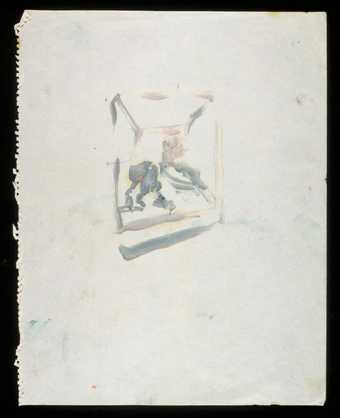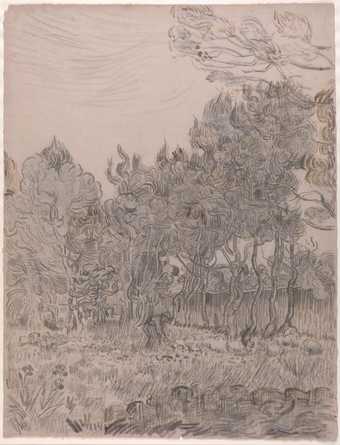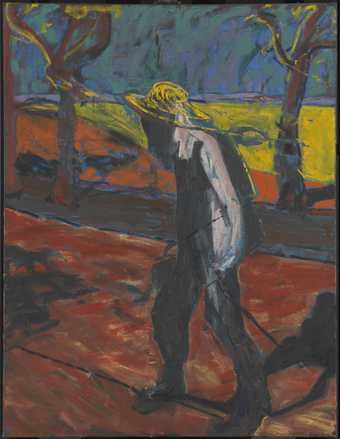Francis Bacon is considered one of the world's leading painters. His art is concerned with being human and the range of emotion, from violence to tenderness, that implies. This display of his paintings from the National Collection and some loans contains major works from all periods.
Bacon's Study for a Portrait of Van Gogh, 1957, is a kind of homage to the painter usually regarded as the founder of expressionism in modern painting – the idea that paint textures and brush marks can reveal and communicate personality and feelings. However, unlike Van Gogh, Bacon does not paint 'directly from 'nature' or from an external subject at all, but from images in his mind's eye. Photographs are important 'triggers' in helping him get these images onto the canvas. This painting was 'triggered' by a colour reproduction of Van Gogh's The Painter on the Road to Tarascon (1888), the original of which was destroyed during the Second World War.
Like Van Gogh, Bacon paints freely, with colours prompted by his feelings, and allowing distortion to take place, sometimes to a very considerable degree.
A 'triptych' is a painting in three parts, Bacon considers this painting his first major work, it provoked a great deal of public reaction when it was exhibited in London in 1945. Although he admits to being influenced by Picasso's techniques and forms, certain kinds of photograph were probably equally important influences: documentary and scientific photo-reportage, early experiments to capture movement, and wildlife photographs.
At the heart of Bacon's art lies his expressive intention – 'to return the onlooker to life more violently'.'




